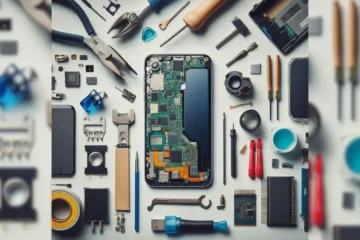Exploring The Advancements And Impact of Drones
Drones, also known as unmanned aerial vehicles (UAVs), have become increasingly popular in recent years due to their versatility and wide range of applications. From delivering packages and performing aerial photography to inspecting infrastructure and surveying land, the uses for drones continue to expand. In the commercial sector, they are being utilized to make tasks safer, cheaper and more efficient.
Additionally, drones have become a popular hobby for many, with drone racing and flying becoming a trendy pastime. The drone industry is expected to experience significant growth in the coming years, with many experts predicting it will become a multi-billion dollar industry. This technology is certainly one to watch as it continues to evolve and change the way we live and work.
- Exploring The Advancements And Impact of Drones
- The Impact of Drones on the Commercial Industry
- The Delivery by Drone in the Future: Challenges and Opportunities
- Opportunities for drone delivery include:
- Drones in Agriculture: Revolutionizing the Farming Industry
- The Pros and Cons of Using Drones for Surveillance
- The Rise of Drone Racing: A New Sport for the Digital Age
- The sport of drone racing has many appeals, including:
The Impact of Drones on the Commercial Industry
The commercial sector has been significantly impacted by drones.They have been used in a variety of industries, including agriculture, construction, delivery, energy, insurance, and real estate.
In agriculture, drones are used for crop monitoring, precision spraying, and mapping. In construction, they are used for surveying, inspection, and mapping. In delivery, they are used to transport goods and packages. In energy, they are used for inspection of power lines and wind turbines. In insurance, they are used for property inspections and claims assessment. In real estate, they are used for aerial photography and videography.
Drones have also been used for search and rescue operations, disaster response, and environmental monitoring. They have also been used for scientific research and wildlife monitoring.
The use of drones has many benefits, including increased efficiency, cost savings, and improved safety. However, safety and privacy concerns are also present.The use of drones is regulated by the Federal Aviation Administration (FAA) in the United States and by similar organizations in other countries.
The Delivery by Drone in the Future: Challenges and Opportunities
Drone delivery, also known as unmanned aerial vehicle (UAV) delivery, is a rapidly growing industry with a lot of potential for the future. The use of drones for delivery has the potential to greatly increase efficiency and reduce costs.
Opportunities for drone delivery include:
- Increased speed and efficiency: Drones can bypass traffic and travel directly to their destination, which can greatly reduce delivery times.
- Improved accessibility: Drones can deliver to remote or hard-to-reach areas that may be difficult for traditional delivery methods.
- Cost savings: Drones can reduce labor and transportation costs, making it more cost-effective to deliver goods.
- Reduced environmental impact: Drones do not emit pollutants, and can reduce the number of delivery vehicles on the road, thus reducing carbon footprint.
Challenges for drone delivery include:
- Safety and regulation: Drones need to be operated safely and in compliance with regulations to ensure they do not pose a threat to people or property.
- Battery life and weight restrictions: Drones have limited battery life and weight restrictions, which can limit the distance they can fly and the amount of cargo they can carry.
- Weather: Inclement weather can ground drones and disrupt delivery schedules.
- Privacy and security: There are concerns about the privacy and security of personal information and the potential for drones to be used for nefarious purposes.
The drone delivery industry is still in its early stages, and there is a lot of room for growth and innovation. Companies such as Amazon, DHL, and UPS are investing in drone delivery technology and testing different models for delivery. In the future, it is likely that we will see more widespread use of drones for delivery, especially in urban areas.
Drones in Agriculture: Revolutionizing the Farming Industry
Drones, or unmanned aerial vehicles (UAVs), have the potential to revolutionize the agriculture industry by providing farmers with more efficient and accurate ways to monitor and manage their crops.
Some of the ways that drones are being used in agriculture include:
- Crop monitoring: Drones equipped with cameras and sensors can capture high-resolution images and data of crops, allowing farmers to identify issues such as pests, disease, and nutrient deficiencies.
- Precision spraying: Drones can be equipped with sprayers to apply pesticides and fertilizers in a precise and targeted manner, reducing the amount of chemicals used and increasing efficiency.
- Mapping: Drones can be used to create detailed maps of farmland, including information about topography, vegetation, and soil conditions.
- Livestock monitoring: Drones can be used to monitor the movement and condition of livestock, allowing farmers to identify and address issues such as sick or injured animals.
The use of drones in agriculture has many benefits, including increased efficiency, improved crop yields, and reduced costs. Drones can also reduce the need for manual labor and decrease the amount of chemicals used in farming. Additionally, drones can also help farmers to access hard-to-reach areas and get a bird’s-eye-view of their fields.
However, there are also challenges to using drones in agriculture. Weather conditions and FAA regulations can limit the use of drones. Additionally, the cost of drones and their maintenance can be high, making it difficult for some farmers to adopt this technology.
Overall, drones have the potential to revolutionize the agriculture industry by providing farmers with more efficient and accurate ways to monitor and manage their crops. The industry is still in the early stages, but it is likely to continue to evolve and grow as technology improves and regulations evolve.
The Pros and Cons of Using Drones for Surveillance
Drones have become increasingly popular for surveillance purposes due to their ability to capture high-resolution images and videos and navigate difficult terrain.
Pros of using drones for surveillance include:
- Increased efficiency: Drones can cover large areas quickly and easily, and can access areas that would be difficult or dangerous for human operators.
- Improved safety: Drones can be used to monitor potentially hazardous situations, such as natural disasters or criminal activity, without putting human operators at risk.
- Cost-effectiveness: Drones can be less expensive to operate than manned aircraft, and can be used for a wide variety of tasks.
- Better data collection: Drones can be equipped with advanced sensors and cameras, allowing them to collect detailed data on a wide range of subjects.
Cons of using drones for surveillance include:
- Privacy concerns: Drones can be used to collect information about individuals without their knowledge or consent, raising concerns about civil liberties and privacy.
- Safety concerns: Drones can pose a safety risk if they malfunction or are flown in restricted airspace.
- Misuse: Drones can be used for illicit activities such as smuggling, espionage or even weaponization
- Battery life and weather limitations: Drones have a limited battery life and can be grounded by inclement weather, which can disrupt surveillance operations.
Overall, the use of drones for surveillance can have both benefits and drawbacks. It can be a useful tool for monitoring and collecting data on a wide range of subjects, but it also raises important privacy and safety concerns. It’s important to have regulations in place to govern their use, to ensure their use is for the greater good and not for any malicious purposes.
The Rise of Drone Racing: A New Sport for the Digital Age
Drone racing, also known as first-person view (FPV) racing, is a relatively new sport that involves pilots controlling small, high-speed drones through a series of obstacles, while wearing special goggles that give them a first-person view of the drone’s flight. The sport has been on the rise in recent years, with the formation of organizations such as the Drone Racing League (DRL) and the International Drone Racing Association (IDRA) that organize races and competitions at various locations around the world.
The sport of drone racing has many appeals, including:
- Excitement: Drone racing is fast-paced and thrilling, with pilots maneuvering their drones through tight spaces and performing aerial acrobatics.
- Accessibility: Drone racing can be enjoyed by people of all ages and skill levels, as there are a variety of different drones and racing classes available.
- Technology: Drones are a product of the digital age, and the sport of drone racing allows enthusiasts to experience the latest in drone technology and to be part of the community of tech-savvy enthusiasts.
- Spectator sport: Drone racing is also a spectator sport, with live streaming and events, allowing fans to watch the action and to get closer to the action by using VR goggles.
However, there are also some challenges to the sport of drone racing:
- Safety: Drone racing can be dangerous, as the drones are small and fast, and the pilots are flying them at high speeds in close proximity to each other and other obstacles.
- Regulation: The sport is still relatively new, and regulations are still being developed to ensure the safety of pilots, spectators, and the general public.
- Cost: Racing drones can be expensive and need constant maintenance, and the sport can be costly to organize and to participate in.
Despite these challenges, drone racing continues to grow in popularity, and is being recognized as a legitimate sport. It is being featured in various TV shows, and the DRL has partnered with major sports networks to broadcast their races. It’s likely that the sport will continue to evolve and attract more participants and fans in the future.



